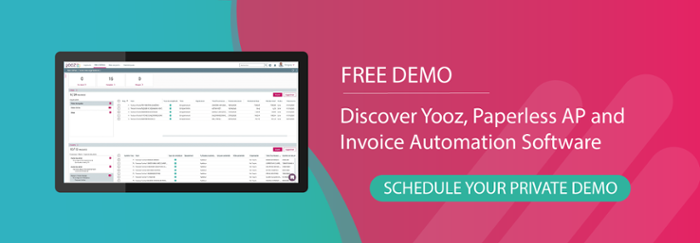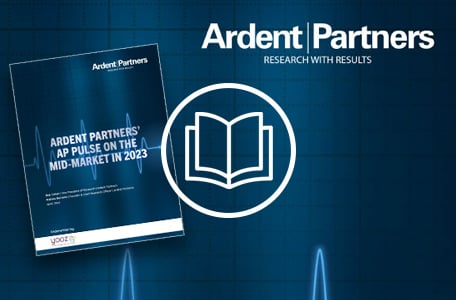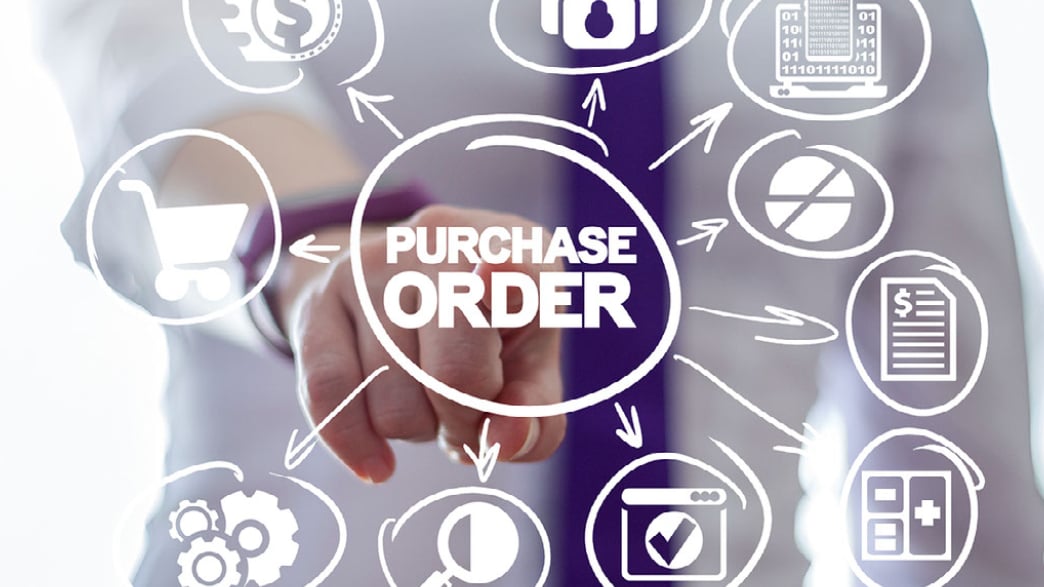In the dynamic landscape of growing businesses, the Accounts Payable department plays a crucial role in managing the rising influx of invoices. To streamline this essential function, understanding and mastering the art of invoice processing becomes paramount.
In this article we'll explore the concept behind invoice processing: understand the definition, highlight its significance, and unveil practical steps on how businesses can use technology and automated invoice processing to enhance their invoice processing workflow.
Are you ready to unleash the potential of invoice processing system and optimize your Accounts Payable operations?
What is Invoice Processing
Invoice processing serves as the backbone of managing vendor or supplier invoices within a company. This essential process encompasses a series of activities including invoice receipt, verification, approval, and then delivery receipt and payment.
The significance of invoice processing can't be emphasized enough due to its significance in managing supplier relationships, ensuring accurate and timely payments, and optimizing the overall cash flow of an organization.
Unveiling the Key Steps in the Invoicing Process
- Invoice receipt: The invoice process begins when invoices are received from suppliers in either physical or electronic format. This is the foundation of the invoice process workflow.
- Data entry: The relevant invoice data is entered into the system, ensuring that every important detail is captured. This step sets the stage for the next steps: validation and approval.
- Validation and compliance: To ensure accuracy and adhere to the contractual terms or the purchase orders, invoices undergo a validation process. This includes cross-checking the invoice details with relevant records to ensure accuracy and eliminate any discrepancies.
- Approval: Once the invoice validation is complete, the invoice move to the approval stage. This is designated personnel review the invoice to ensure that they meet preset criteria and then authorize them for payment. This step serves as a type of quality control, a final safeguard against errors, irregularities, or fraud attempts.
- Payment: The final step in the invoice process journey involves scheduling payments. Approved invoices are promptly processed for payment in a predetermined format, ensuring that suppliers receive their dues within the contractually agreed upon timeframe. Completing payment in a timely manner fosters trust and strengthens business relationships with the vendors or suppliers.
Manual Effort Versus Automated Efficiency
Whereas manual invoice processing requires significant time and effort, it also exposes organization to the possibility of errors. However, businesses now have the option to leverage technology and streamline their operations through automated invoice processing systems.
By harnessing the power of cutting-edge technologies like Optical Character Recognition (OCR) and Machine Learning (ML), these systems extract and validate data, streamlining the entire approval and payment process.
What else is automated invoice processing to an organization? The fact is, automated invoice processing offers a host of advantages including:
-
It reduces the need for manual intervention by employees, saving valuable time and resources.
-
The chance of errors diminishes, ensuring a consistently greater accuracy and maintaining high data integrity.
-
Automation technology acts as a robust defense against fraudulent activities. From electronic entry to cross-checking and more, automation offers built-in mechanisms that have the ability to detect and prevent unauthorized actions.
-
Embracing automation leads to notable cost savings, optimizing financial processes and driving overall operational efficiency.
Simply put, automation empower businesses in today's competitive landscape.

How Does Automated Invoice Processing Work
Automated invoice processing revolutionizes traditional workflows by leveraging software to streamline and automate the entire invoice processing workflow. This approach involved digitizing and capturing invoice data, validating invoices against purchase orders and receipts, automating approval workflows, and initiating payment.
By automating these key processes, businesses can significantly reduce manual intervention, improve accuracy, and accelerate invoice processing times.
What are the Benefits of Automated Invoice Processing
Integrating automated invoice processing into business operations yields several benefits including:
- Cost savings: Automating the invoice processing workflow can reduce the time and costs associated with manual invoice processing procedures, resulting in substantial cost savings for businesses.
- Improved efficiency: Automated invoice processing can accelerate the invoice processing workflow, reducing processing times and improving supplier relationships.
- Increased accuracy: Automating the invoice processing workflow can reduce human errors associated with manual processing, resulting in more accurate and timely payments to suppliers.
- Enhanced visibility: Automated invoice processing can provide businesses with real-time visibility into the invoice processing workflow. This enables them to better manage their Accounts Payable system, enabling improved financial control and strategic decision-making.
By embracing automated invoice processing, businesses can optimize their operations, streamline invoice processing, and unlock the newly discovered efficiency, accuracy, and visibility within their Accounts Payable systems.
Best Practices for Invoice Processing
To optimize the invoice processing workflow and improve efficiency, businesses should consider implementing the following 5 best practices:
- Standardizing the invoicing process: Standardizing the invoicing process can help reduce errors and improve accuracy in the invoice processing workflow. Regularly review and update the standardized process to incorporate new industry-wide best practices and evolving requirements.
- Implementing a three-way match: Implementing a three-way match between invoices, purchase orders, and receipts can help validate invoices and reduce the risk of overpayment. Utilizing advanced technologies such as Artificial Intelligence (AI) and Machine Learning (ML) to automate the three-way matching process.
- Using electronic invoicing: Using electronic invoicing can help reduce manual intervention and accelerate the invoice processing workflow. Integrate electronic invoicing with document management systems for efficient storage, retrieval, and archiving of invoices.
- Training staff: Providing staff with ongoing training on emerging technologies, software tools, and any industry trends related to invoice processing. Forster a culture of continuous learning and improvement.
- Monitoring for duplicate payments: Establish robust controls and approval processes - a system of checks and balances - to prevent and mitigate the risk of duplicate payments. This can help to reduce any risk of overpaying suppliers.
Remember to regularly assess the effectiveness of any optimization process, adapting them as needed with evolving business requirements and ongoing technological advancements.
The Invoice Approval Process
One of the key steps in the invoice processing workflow is invoice approval. After an invoice is received, it must go through an approval process before any payment can be authorized. Depending on the organization, this may involve several levels of review such as departmental, managerial, and finance approvals. While manual approval is an option, may organizations choose to utilize invoice processing software to automate and streamline their approval process.
Accounts Payable Department and System
The Accounts Payable department is responsible for managing the invoice payments. This department receives invoices, processes them for payment, handles payment processing, and oversees the payment schedule. In some cases, the Accounts Payable department also manages vendor relationships and negotiates payment terms.
To facilitate efficient payment processing, organizations again often turn to Accounts Payable systems - software that is designed for invoice payment management. By automating the invoice processing process, Accounts Payable systems help to reduce the time and cost associated with manual methods.
Invoice Data and Prevention of Duplicate Payments
Invoice data plays a critical role in the overall invoice processing workflow. It includes essential information, including the supplier's name, invoice number, date, and amount. Ensuring the accuracy of invoice data is essential for validating and processing invoices and ensuring the correct payments to suppliers.
Duplicate payments occur when a vendor or supplier is paid twice for the same invoice, resulting in significant costs for businesses and potential harm to supplier relationships. To prevent such occurrences, businesses can implement automated invoice processing solutions that automatically match invoices to payments and identify potential duplicates, thereby mitigating the risk of duplicate payments.

The Importance of Streamlining Your Accounts Payable System
Optimizing your accounts payable system can offer several benefits for businesses, such as:
Improved Cash Flow
Efficiently streamlining the accounts payable system can help businesses to better manage their cash flow. By automating invoice processing, businesses can accelerate the invoice-to-payment cycle and reduce the time it takes to process payments.
Prompt payment processing times enable suppliers to receive their payments more quickly, fostering improved supplier relationships. Furthermore, businesses can take advantage of early payment discounts, resulting in reduced costs and enhanced cash flow.
Cost Reduction
Manual invoice processing can be costly for businesses, requiring significant time and resources to process invoices, approve payments, and reconcile accounts. By streamlining the Accounts Payable system and automating these processes, businesses can reduce the time and costs associated with manual invoice processing. Automation can also reduce the risk of errors and fraud, further reducing costs associated with manual intervention.
Enhanced Supplier Relationships
Efficiently streamlining the Accounts Payable system can strengthen supplier relationships by ensuring accurate and timely payments. Automated invoice processing helps ensure that suppliers are paid on time and reduce payment disputes, leading to the stronger supplier relationships.
Additionally, invoice automation software offers real-time visibility into payment status and history, making it easier for businesses to address payment inquiries and enhancing transparency in the payment process.
Increased Efficiency
Optimizing the Accounts Payable system improve efficiency by minimizing manual intervention and automating processes. Through automating invoice processing, businesses can reduce the time and resources required for invoice validation, approval, and payment processing. Automation also helps reduce the risk of errors and fraud, further improving efficiency within in the Accounts Payable system.
Yooz: The Automated Invoice Processing Solution
Yooz presents an automated invoice processing solution that is specifically designed to streamline any business' Accounts Payable system. The Yooz solution automates the workflow for invoice processing, reducing manual intervention (and corresponding human errors) and enhancing accuracy and efficiency.
Yooz digitizes and captures invoice data, validates invoices against purchase orders and receipts, automates invoice approval workflows, and initiates payment. In addition, the Yooz solution provides real-time visibility into the invoice processing workflow, empowering businesses to effectively manage their Accounts Payable system.
According to Ardent Partners, electronic invoices now account for more than 50% of the average total invoices received by businesses. While this represents progress, there is still room for improvement. With Yooz, businesses can experience cost savings and efficiency improvements, while simultaneously enhancing their supplier relationships and cash flow.
Conclusion
What is invoice processing? Invoice processing is a crucial part of effectively managing supplier relationships and ensuring accurate and timely payment. The manual approach to invoice processing often consumes valuable time, is prone to errors, and can incur significant costs for businesses.
Fortunately, the adoption of automated invoice processing software can bring remarkable improvements in terms of both efficiency and accuracy, leading to cost savings and enhanced supplier relationships. By implementing best practices for invoice processing and leveraging solutions such as Yooz, businesses can streamline their Accounts Payable system, reduce costs, and achieve greater operational efficiency.
To learn more about how Yooz can help you streamline your Accounts Payable system, request a demo today.
FAQs
What is invoice processing, and how does Yooz simplify this task for organizations?
How does Yooz's invoice processing solution handle different types of invoices, including paper and electronic formats?
Can Yooz's invoice processing solution help organizations streamline approval workflows and ensure compliance with internal policies?
How does Yooz's invoice processing solution integrate with accounting systems to facilitate seamless payment processing?







